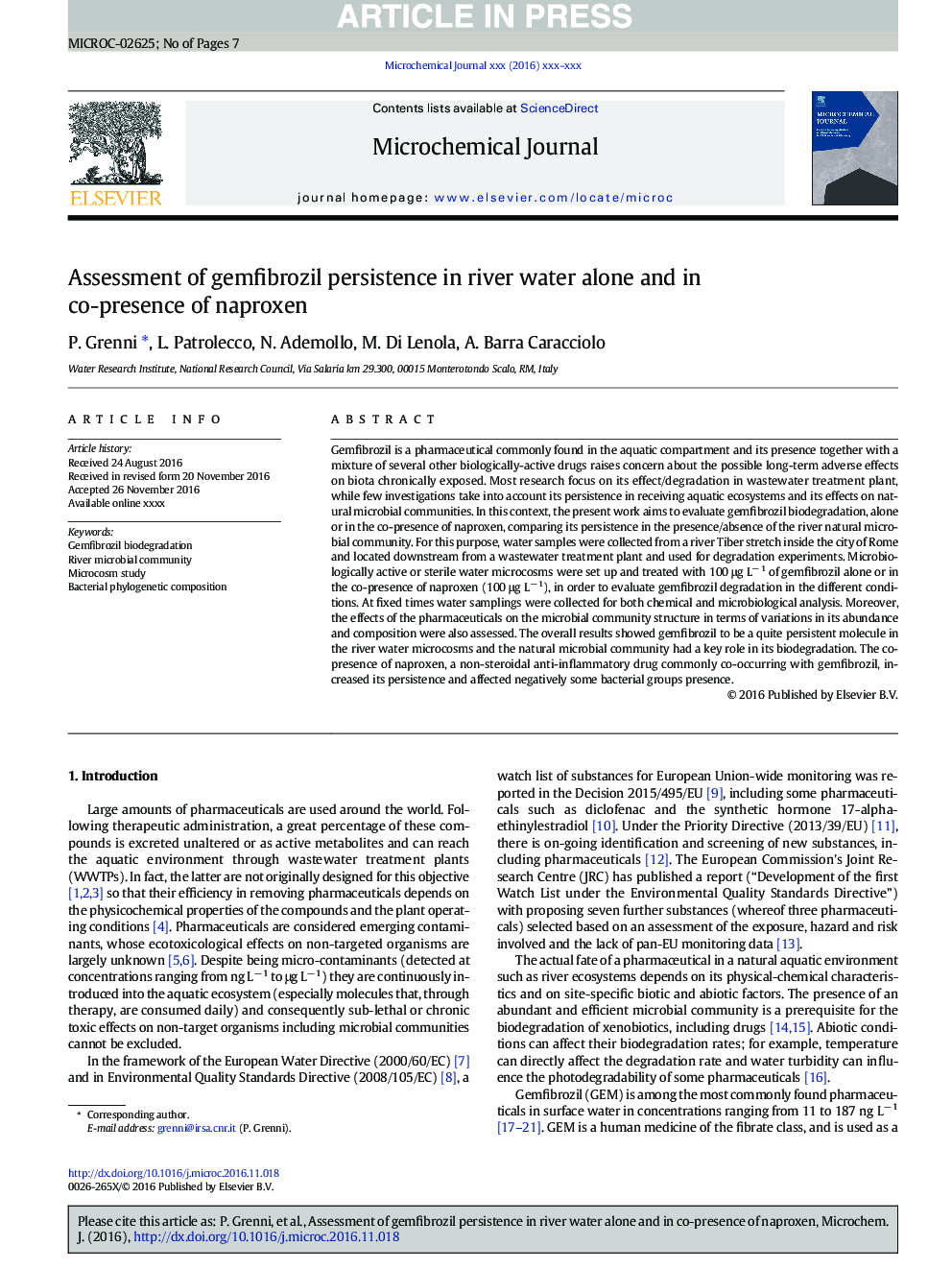| Article ID | Journal | Published Year | Pages | File Type |
|---|---|---|---|---|
| 5138946 | Microchemical Journal | 2018 | 7 Pages |
Abstract
Gemfibrozil is a pharmaceutical commonly found in the aquatic compartment and its presence together with a mixture of several other biologically-active drugs raises concern about the possible long-term adverse effects on biota chronically exposed. Most research focus on its effect/degradation in wastewater treatment plant, while few investigations take into account its persistence in receiving aquatic ecosystems and its effects on natural microbial communities. In this context, the present work aims to evaluate gemfibrozil biodegradation, alone or in the co-presence of naproxen, comparing its persistence in the presence/absence of the river natural microbial community. For this purpose, water samples were collected from a river Tiber stretch inside the city of Rome and located downstream from a wastewater treatment plant and used for degradation experiments. Microbiologically active or sterile water microcosms were set up and treated with 100 μg Lâ 1 of gemfibrozil alone or in the co-presence of naproxen (100 μg Lâ 1), in order to evaluate gemfibrozil degradation in the different conditions. At fixed times water samplings were collected for both chemical and microbiological analysis. Moreover, the effects of the pharmaceuticals on the microbial community structure in terms of variations in its abundance and composition were also assessed. The overall results showed gemfibrozil to be a quite persistent molecule in the river water microcosms and the natural microbial community had a key role in its biodegradation. The co-presence of naproxen, a non-steroidal anti-inflammatory drug commonly co-occurring with gemfibrozil, increased its persistence and affected negatively some bacterial groups presence.
Keywords
Related Topics
Physical Sciences and Engineering
Chemistry
Analytical Chemistry
Authors
P. Grenni, L. Patrolecco, N. Ademollo, M. Di Lenola, A. Barra Caracciolo,
